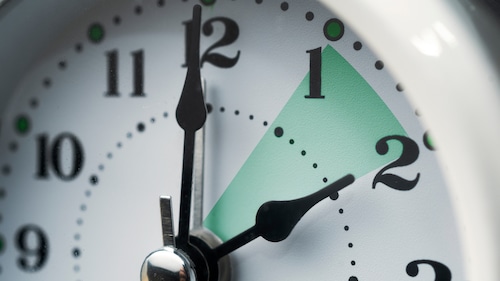
2024-09-20 15:20:03
The first day of fall will arrive on Sunday morning, but we’re still more than six weeks from the end of Daylight Saving Time and turning clocks back one hour.
Daylight Saving Time ends at 2 a.m. on Sunday, Nov. 3, 2024, when the clock will “fall back” one hour and, in theory, give us one extra hour of sleep.
The amount of daylight has continued to decrease slightly each day since summer began on June 20. The last sunset later than 7 p.m. was on Tuesday. By the end of September, sunset will occur around 6:40 p.m.
The amount of daylight continues to diminish each day until Dec. 21 when the winter solstice arrives at 4:19 a.m. Then, the length of days will begin to increase until the summer solstice on June 20, 2025.
The flip side is that the sun will rise approximately one hour earlier each morning after we return to standard time in early November. On Nov. 2, sunrise in New Jersey is at approximately 7:29 a.m. and sunset is at about 5:53 p.m. The next day the sun comes up at 6:30 a.m. but sets at 4:52 p.m.
So while millions of people will travel home from work mostly or entirely in the dark in November, their morning commute will include more daylight.

Daylight Saving Time begins on Sunday, March 10, 2024.Canva for NJ.com
Clocks officially “fall back” at 2 a.m. on the first Sunday in November to 1 a.m.
Daylight Saving Time started on Sunday, March 10, 2024, and will end on Sunday, Nov. 3, 2024 — a run of 238 days. It has lasted from the second Sunday in March until the first Sunday in November since 2007.
We next turn the clocks ahead on March 9, 2025 — 126 days after turning them back. Daylight Saving Time in 2025 will end on Nov. 2, 2025.
The concept dates back more than a century when English architect William Willett proposed the idea to change the clocks in 1907 in “The Waste of Daylight.” The suggestion of using daylight more efficiently can be traced to Benjamin Franklin.
While visiting in Paris in 1784, he wrote a letter to the editors of the “Journal of Paris” calling for a tax on every Parisian whose windows were shuttered after sunrise to “encourage the economy of using sunshine instead of candles,” according to Michael Downing, author of “Spring Forward: The Annual Madness of Daylight Saving Time.”
Daylight Saving became widespread in the U.S. when the Uniform Time Act of 1966 was passed. Back then, Daylight Saving ran from the last Sunday in April to the last Sunday in October and states were allowed to opt out.
In 1986, Daylight Saving was changed to run from the first Sunday in April until the final Sunday in October. The most recent revision took effect in 2006 when Energy Policy Act of 2005 revised Daylight Saving from the second Sunday in March until the first Sunday in November.
Hawaii and most of Arizona do not observe Daylight Saving Time. The time change is also not observed in U.S. territories of Puerto Rico, Guam, American Samoa and the U.S. Virgin Islands. All of Indiana didn’t begin observing Daylight Saving until 2006.
Eighteen states have enacted legislation to make Daylight Saving Time permanent. Voters in California have voted to authorize year-round Daylight Saving Time. Those changes, however, require federal approval.
In March 2022, the U.S. Senate passed the Sunshine Protection Act, which would end changing the clocks twice a year. The U.S. House of Representatives didn’t take a vote on it, though.

Daylight saving time is back again – amid some controversy.
A handful of provinces in Canada — most of Saskatchewan and Yukon — have adopted permanent daylight saving as have parts of British Columbia and two communities in northwest Ontario.
About 70 countries observe Daylight Saving Time. Most of North America, Europe and parts of South America and New Zealand adhere to it, while China, Japan, India and most other countries do not.
It starts on different dates elsewhere. In Europe, for example, Daylight Saving Time starts the last Sunday in March and ends the final Sunday in October.
Our journalism needs your support. Please subscribe today to NJ.com.
Jeff Goldman may be reached at je**********@************ia.com.




